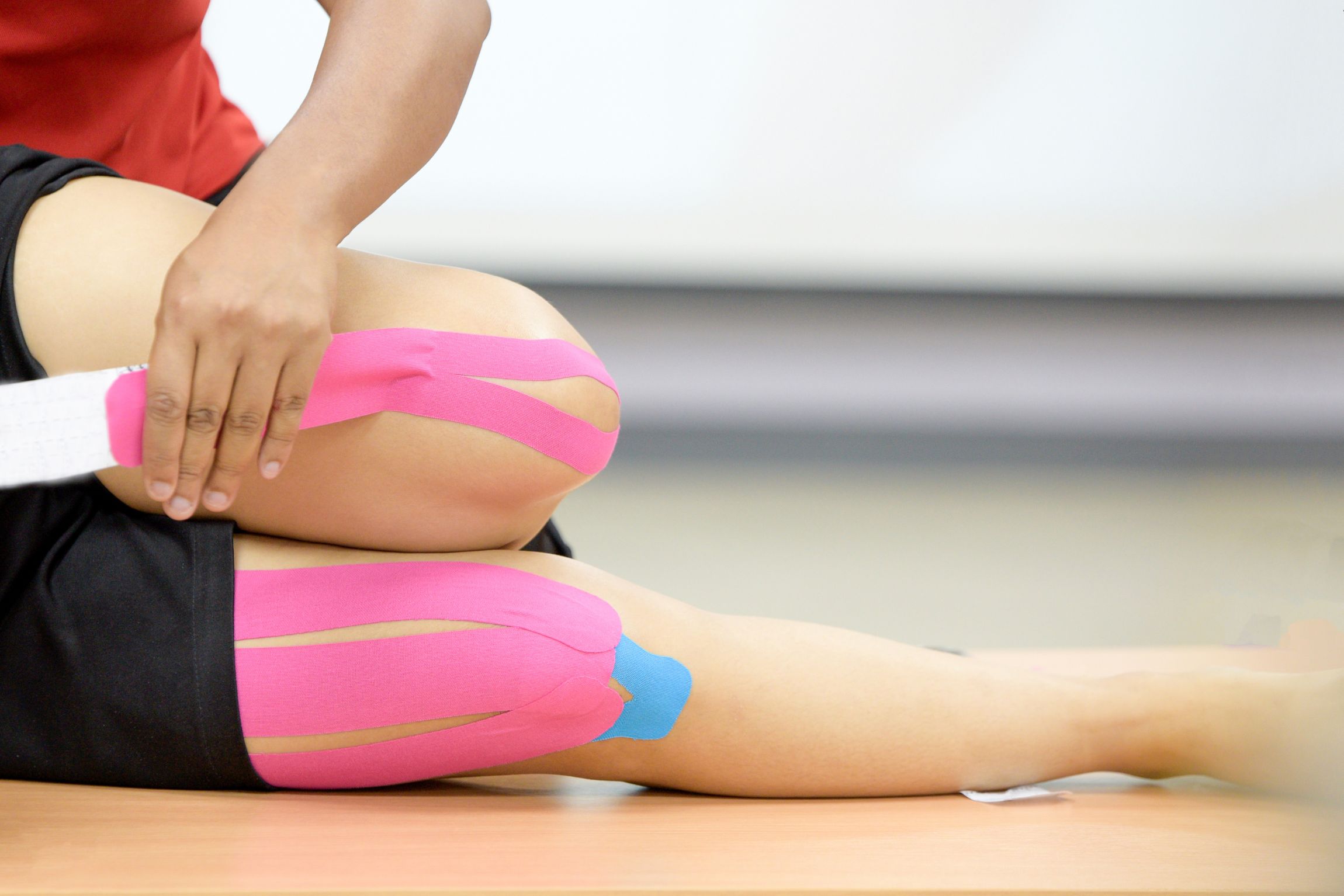If you’ve ever wondered about the colorful strips of tape often seen on athletes, you’re not alone. Kinesio Taping is a therapeutic technique designed to support muscles and joints without restricting movement. This method helps reduce pain and inflammation while improving circulation.
Kinesio Taping isn’t just for athletes. It has various applications, from aiding muscle recovery to enhancing athletic performance.
This technique involves using an elastic therapeutic tape to support muscles, aid joint function, and reduce pain. This tape is notable for its unique properties such as elasticity and latex-free material. Below, you’ll find the essential aspects to consider.
Defining Kinesio Tape
Kinesio tape, also known as elastic therapeutic tape, is designed to provide support without limiting your range of motion. It’s commonly used by athletes and physical therapists.
One important feature is its elasticity, which closely mimics the skin’s natural elasticity. This allows for movement while providing stability.
Kinesio tape is also latex-free, making it suitable for those with latex allergies. The adhesive used in this tape is durable and can last for several days, even through showers and sweating. Different colors of Kinesio tape are available, but they don’t indicate any different properties; they are mainly for aesthetic preferences.
When applied correctly, it can help with pain relief by lifting the skin slightly, which improves blood and lymphatic circulation in the affected area.
Benefits of Kinesio Taping
Kinesio taping offers a variety of benefits that can enhance your physical performance and aid in recovery.
Muscle Re-education: Kinesio tape helps to retrain muscles that have lost function or are working in an unhealthy way. By applying the tape, you can better manage muscle tone and firing patterns, boosting your athletic performance.
Joint and Pain Support: The tape provides support to joints without restricting movement. It’s flexible and moves with your body, unlike traditional rigid tapes. This is especially useful for athletes who need both mobility and stability.
Reducing Pain: Kinesio tape can help decrease pain by gently lifting the skin, which alleviates pressure and allows for improved lymphatic drainage. This mechanism helps reduce inflammation and pain.
Biomechanical Effects: The tape’s elasticity allows it to integrate with your body’s natural biomechanical movements. It helps normalize muscular contractions and maintains proper posture during athletic activities.
Enhanced Circulation: Improved blood flow is another key benefit. The tape lifts the skin slightly, which enhances blood flow and circulation of oxygenated blood and lymphatic fluids. This can accelerate the healing process and reduce swelling.
Injury Recovery: If you’re recovering from an injury, kinesio taping can be beneficial. It offers support and reduces pain without limiting your range of motion, aiding in faster and more efficient recovery.
Taping Techniques
When it comes to Kinesio Taping, there are several techniques you can use depending on your needs.
Muscle Technique: This is used to facilitate or inhibit muscle function. Placing the tape on stretched skin can support weak muscles or relax overactive ones.
Ligament/Tendon Technique: For ligaments and tendons, you can apply the tape with no stretch in the middle and a high stretch at the ends. This provides stability and reduces strain on the area.
To ensure the tape adheres well, rub the shiny side of the backing to activate the adhesive. This is crucial for both immediate effectiveness and longevity of the tape’s application. You can also shower or swim with the tape on, but remember to pat it dry gently afterward.
Lymphatic Technique: The tape can help improve lymphatic drainage by creating small folds in the skin. This technique involves cutting the tape into thinner strips and applying them in a fan-like pattern to promote fluid drainage.
Corrective Technique: This involves using the tape to correct joint or muscle movement. Apply the tape with a slight stretch to pull the skin and muscle into the desired position.
Combination Technique: Sometimes, multiple techniques are combined to address complex issues. For instance, you might use muscle and lymphatic techniques together for comprehensive treatment.
Keep an eye out for any skin reactions like redness or itching. If you notice any irritation, remove the tape immediately.
Case Studies and Clinical Evidence
Kinesio Taping has been extensively researched to determine its effectiveness in various settings. Key studies highlight its impact on sports injuries and rehabilitation from musculoskeletal disorders.
Sports Injuries
In cases of sports injuries, Kinesio Taping is widely applied by athletes and rehabilitation specialists. Research indicates that it supports injured muscles and joints, improves blood flow, and reduces pain.
For example, a systematic review found significant benefits in managing sports injuries.
A meta-analysis showed that Kinesio Taping can be effective in treating and preventing injuries, particularly in high-impact sports. By lifting the skin, it increases circulation and lymphatic drainage, promoting quicker recovery.
Rehabilitation from Musculoskeletal Disorders
Rehabilitation from musculoskeletal disorders often includes Kinesio Taping as an adjunct therapy. Studies have shown its efficacy in reducing chronic pain and improving overall function.
One study published on PubMed Central found that Kinesio Taping helped reduce pain and increase mobility. A review focused on knee osteoarthritis also revealed that Kinesio Taping helped reduce pain and increase mobility.
Although the evidence is still evolving, these results indicate a promising role for Kinesio Taping in clinical settings to assist in rehabilitation efforts.
